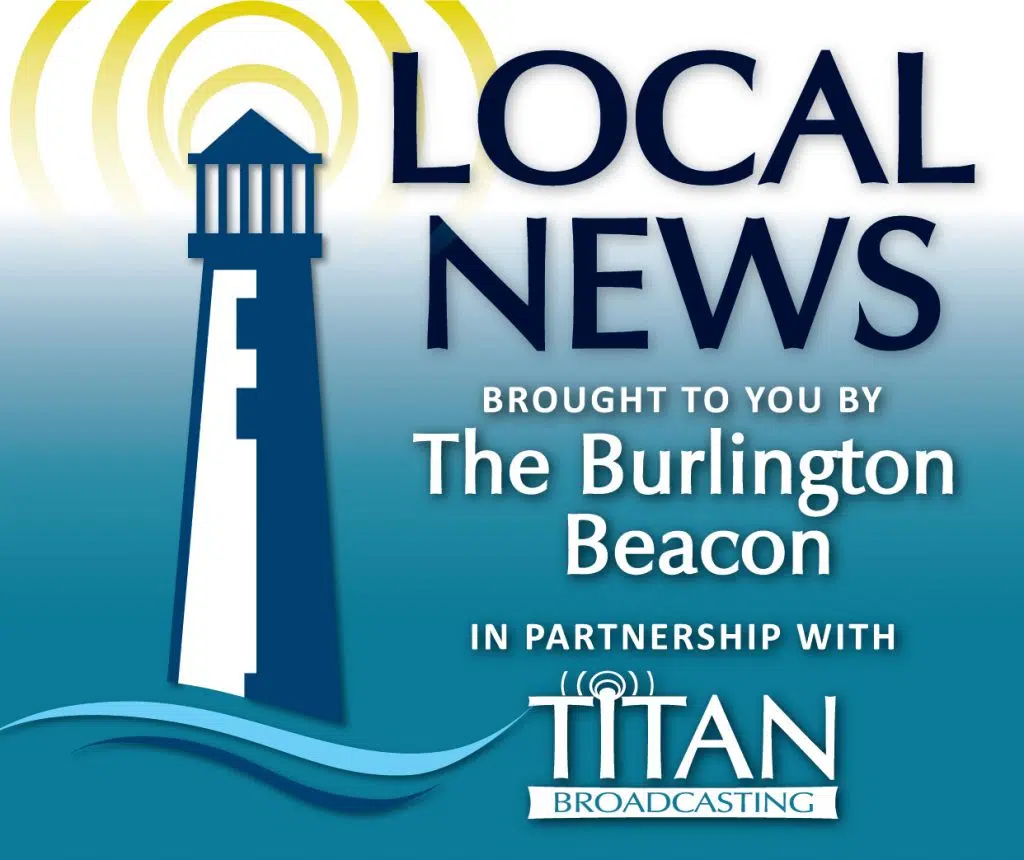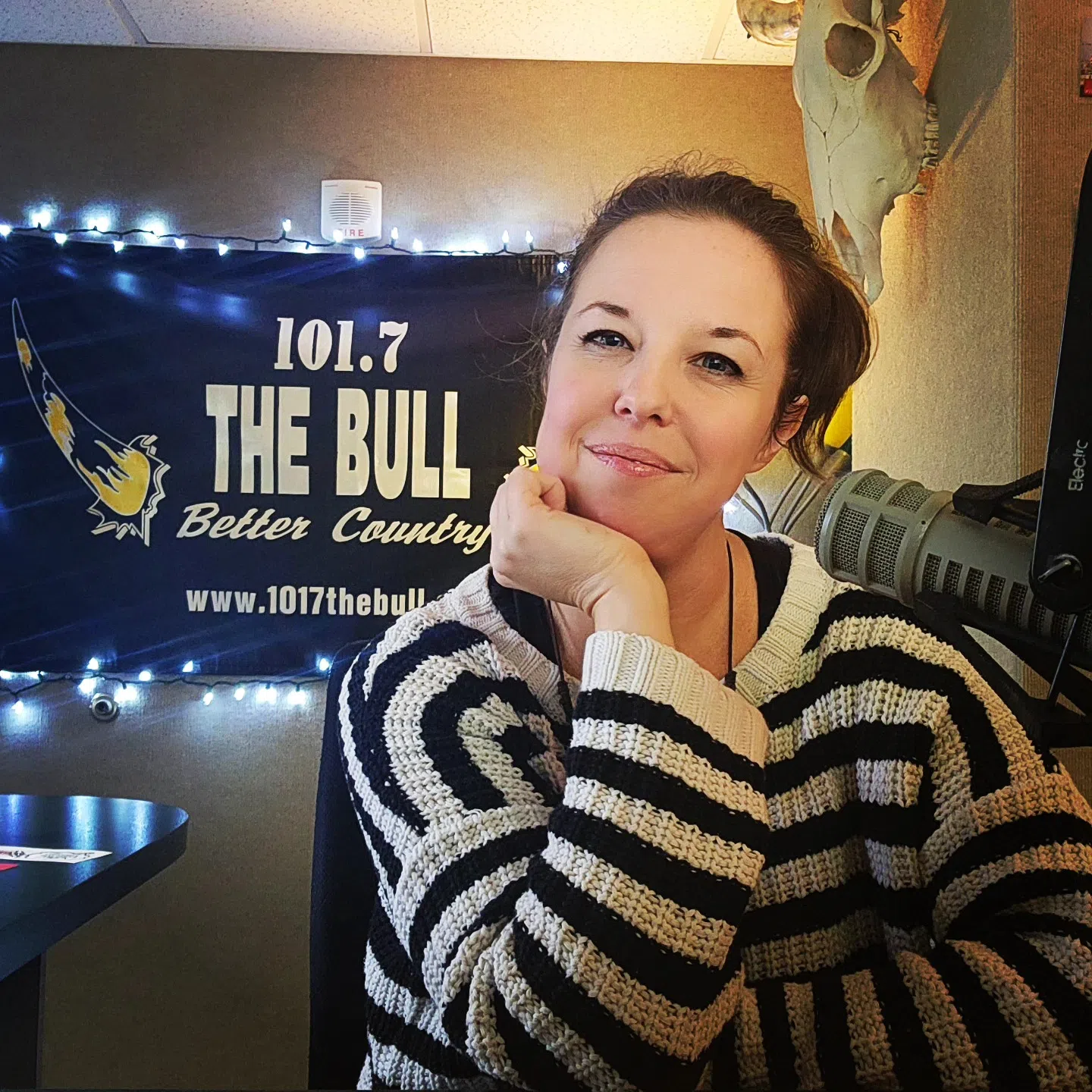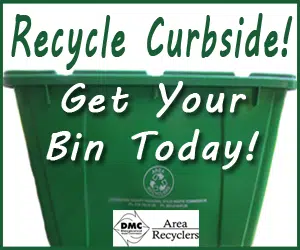Why Radio and How Does It Work?
Do you have to turn the car radio down when you’re lost? How do you know there’s a burglar in the house when you’re asleep? What about when the teacher would call on you because she suspected that you weren’t paying attention, and she was right. But somehow you still knew what the question was. Your ears never stop working. That’s why radio is so powerful. Even when we’re not paying attention-our ears and brains are working together. The average person knows the words to 1200 songs-about 98% of which they never intended to learn.
Have you ever caught yourself staring at the same page for minutes on end, having no idea what the printed words say? That’s because you have to translate the written word into the spoken word to understand it. As you mentally create the sounds of the words in your head, your brain comprehends what is written.
You’ve seen a dollar bill thousands of times. Can you repeat all the words on that dollar without looking? What about the words to “Eres Tu“? You don’t even know what the words mean-but you can sing them. Chris Farley and David Spade did in “Tommy Boy,” and we’ll bet you could relate. You don’t have to try to learn things when you hear them-you just do. Frequency and repetition – they work.
The Emotional Power Of Radio
Respondents in the study felt that radio ads were more directed toward them personally and that the businesses that were a good fit for them. They also felt that businesses that ran on the radio cared more about them personally than businesses that ran TV or newspaper.
We hear people say that Mix 107.3 or 101.7 The Bull is “my station”. They feel ownership of what the station does. They’re a part of it. We’re their friends.
A lot of people have time to listen to radio in the car when they’re alone-what can you say that will make them know about your business and like you best?
Radio reaches almost everyone, every day. Need proof? Check this out
![[image] Brain Map](http://titanburlington.com/images/brain-map.jpg) So, how does it work? See that large blue area (auditory association/memory of sound)-that’s where your brain stores sound. It’s right by the auditory cortex (that small maroon blob). Look how big Auditory Association is compared to Visual Association (red, toward the back). Now, where we’re trying to go is the Prefrontal Cortex-that’s where action happens. Sight has to go from your eyes (front, obviously) to the back of your head to where it’s processed in the brown, then to the storage area. And it’s a long way from the Prefrontal Cortex-up where things happen.
So, how does it work? See that large blue area (auditory association/memory of sound)-that’s where your brain stores sound. It’s right by the auditory cortex (that small maroon blob). Look how big Auditory Association is compared to Visual Association (red, toward the back). Now, where we’re trying to go is the Prefrontal Cortex-that’s where action happens. Sight has to go from your eyes (front, obviously) to the back of your head to where it’s processed in the brown, then to the storage area. And it’s a long way from the Prefrontal Cortex-up where things happen.
Another interesting thing on the brain map is Broca’s area-that’s where the little gate keeper of your brain says, “no…ignore that-it’s boring and predictable!” You want to surprise Broca, get him interested.
You’ve been introduced to right brain vs left brain, right? Here’s a quick recap. Left hemisphere is analytical, logical. Right brain is emotional, artistic. So, if the left brain has a security guard around it that demands that your offer make the most sense, shouldn’t we knock on the door of the right side? We can sneak into the right side with an idea that the left side rejects as nonsense (like imagination).
Here’s an example of how powerful the right brain is: logically, it makes more sense to be healthy, eat right and hit the gym after work. But emotionally, a candy bar is good along with a nap.
People make decisions with emotion and reinforce them with logic. The Neurologist Donald CaIne said that reasonable logic leads to conclusions while emotions create actions. It’s important to appeal to emotion with your radio advertising in particular. Print is better for the price war-and radio is better to convince the non-price based shopper to buy from you using emotion.
Frequency, Repetition and Anchoring
- Frequency – how many times the same person hears your commercial within 7 days.
- Repetition – saying the same thing over and over until it sinks in. You might be tired of your ad. We might be tired of your ad. But listeners are just starting to get it after 6 weeks or so.
- Anchoring – this is the hardest part. This is implanting an associative memory-so your message has to be associated with a memory already your prospect’s mind.
Kinds of Memory
- Procedural – this is muscle memory. You remember exactly how your hands should grip a golf club or swing a baseball bat, even if you haven’t played for years. You remember the fingerings for a song on the violin you haven’t played for decades.
- Electrical – This is like the RAM in your computer-if you turn off your computer without saving, it’s gone forever. It’s the thought you’re thinking right now-and it’s not attached to anything, anchored anywhere.
- Chemical – This is long-term, permanent memory. This is where we want your ad to end up, so that when people pull out their mental file folder for your business category, your name is on top. You do this with frequency, repetition and anchoring.
Advertising FAQs
Should I advertise?
If you have competitors working to attract your customers, or if you want to consistently grow your sales and make more money, then advertising is a necessity. The key is to know who your customer is, and why they like to do business with you. Once you know the characteristics of your best customers, you simply need to target your advertising in a way that converts prospective customers with similar characteristics into loyal customers. It is important to remember that most businesses are simply unable to effectively be all things to all people. Always keep in mind that when you select a particular advertising vehicle (radio, television, print, outdoor), you are buying an audience. The goal is to buy the right audience for your business and improve your chances for success.
Advertising creates store traffic, attracts new customers, boosts and maintains morale, is an investment in success, encourages repeat business, generates continuous business, keeps your business top-of-mind, keeps you in the competitive race, gives your business a successful image, and businesses that succeed are usually strong, steady advertisers.
Is radio right for me?
If radio were invented today, it would be all the marketing rage. Why? Because we live in an on-the-go society, and unlike newspaper or television, radio is with us everywhere; in the car, at work, and in the home. Radio is an affordable, mobile, and intrusive medium that provides advertisers with the ability to target a specific audience. When used correctly, radio provides a cost-effective marketing platform for nearly any type of business.
Radio can reach on-the-go consumers and allows you to establish a special relationship with consumers. Radio’s listenership remains strong, while time spent with other media declines. Radio can cost-effectively knock through the sea of media bombardment. Radio creates success with powerful and profitable on-location remote broadcasts. Radio’s unique formats allow you to target your best prospects. Radio reaches prospects closest to the point of purchase. Radio can bridge the gaps left by other media options. Radio provides unique specialized on-air promotions. Radio is king for establishing top-of-mind-awareness.
What are the most frequent mistakes advertisers make?
- Not having the right level of commitment and focus. Many business owners think they need to do a little of everything instead of doing one thing well. It’s been said, “I throw my advertising dollars against the wall and hope some of it sticks.” Almost any business can get all the customers they need by simply attacking and dominating the right radio station.
- Throwing in the towel before the advertising can work. Advertising is like trying to get in shape. Getting started is the hardest part, and the rewards for your time and effort are not always readily apparent. However, with a healthy dose of commitment and focus to your plan, you will eventually enjoy the results. Successful advertising is no different.
What’s the best way to advertise?
Unless you’re having a special event, TOMA (top-of-mind awareness) advertising yields the greatest long-term benefits. Not everyone needs your products or services today, so advertising for a month is a crapshoot. Reminding a large group of consumers who are most likely to do business with you about your Unique Selling Proposition over and over is most beneficial. When any of our listeners need your product, our goal is to have your business in their top-of-mind recall.
How long does it take for advertising to begin working?
This depends on what you are selling and the offer you’re making. Tell people to visit you for a free $100.00 bill, and you’ll have a traffic jam outside your business. Otherwise, advertising is similar to pushing a car. It’s tough at first, but the more you push, the easier it gets. Soon enough you can move the car along with minimum effort. We tell our new clients, “In three months you’ll hate me, in six months you’ll talk to me again, and in ten months you’ll be inviting me to your house for dinner.” Stick with your plan and you’ll be provided a healthy return on investment.
What is TOMA?
TOMA (top-of-mind awareness) advertising yields the greatest long-term benefits. Not everyone needs your products or services today, so advertising for a month is a crapshoot. Consistently reminding a large group of consumers, who are also most likely to do business with you, about your Unique Selling Proposition, is most beneficial. When any of our listeners need your product, our goal is to position your business in their top of mind recall.
What should I say in my commercial?
Ask yourself, “Why should someone do business with me?” Be specific. “What truly makes me a better choice than my competitors?” “What makes us special?” “What is our Unique Selling Proposition?” Take a look at your strengths versus your competitor’s weaknesses that can result in taking business from them. Our goal is to grow your business by getting you an unfair share of the market’s dollars from your competition. A marketing analysis can help us fine-tune your message.
How can I guarantee success?
After ensuring your business is in fine operating order, stick to a well-constructed advertising message month after month. If you deliver your message consistently to the right people, your advertising will yield rewarding results.
I’m a retailer, what’s best for me?
Do you live and die by sale events, or do you want more consistency for your business? Sale event advertising can drive customers, but it’s the “drug of marketing.” The more sales you have, the more advertising you need. However, if you want a steady, less fickle customer base, we recommend the safer consistent approach.
I’m NOT a retailer, what’s best for me?
The right message delivered consistently. Whether you’re a doctor, lawyer or carpet cleaner, a well-developed commercial (great copy) stating your unique selling position will keep you in the consumers mind when the day comes that they need your services.
I’m having an event, how should I advertise?
Heavy advertising works best for event marketing. We recommend eight to twelve commercials a day for a minimum of three days prior to an event or major sale.
What about television and cable advertising?
Although a sometimes effective marketing weapon, producing a good commercial that doesn’t look cheap runs thousands of dollars and buying prime time network television can cost hundreds of dollars for just thirty-seconds. Cable television may be much cheaper than network tv but your ad typically gets spread far to thin between many channels making it nearly impossible to achieve the necessary frequency. Television advertising that is effective, meaning acceptable frequency and good placement on a popular network or program, can be costly.
What about newspaper advertising?
Newspaper has more of an information medium than it is a motivational medium. Newspaper was great twenty years ago when we had the time to sit and read it everyday, but unfortunately, it doesn’t play as well in today’s mobile and fast paced world. Newspaper does not afford you the ability to target your customers, so it tends to be a “Spray and Pray” medium. Newspaper is quickly losing may of its subscribers to online news sources which continues to lessen its effectiveness. Additionally, in many instances, controlling the placement of your advertisement within the newspaper can be difficult at best.
What about yellow pages?
Like newspapers, the yellow pages are primarily an informational rather than motivational medium. Place your business’s name in the consumers’ sub-conscious prior to opening the yellow pages, and the yellow pages just might work better for you. Most consumers say they would be more likely to call a business with a smaller yellow page ad that they had previously heard of, from radio perhaps, than an unknown business with a larger yellow page ad. Radio can prime your prospects with your unique selling position prior to ever going to the yellow pages, giving you the best shot to receive their phone call. With the constant increase of internet availability many consumers are turning to the internet rather than the yellow pages.
What’s a positioning statement?
All successful marketers use a Positioning Statement. A Positioning Statement separates you from your competitors, and reminds consumers of what makes you special. You can use your Positioning Statement in all your advertising (radio, print, TV). Just remember to keep it simple and be sure it focuses on your Unique Selling Proposition.
What is branding?
Branding is establishing in the consumers mind your Unique Selling Proposition. It helps prospects understand why they should do business with you rather than your competitors.
How does a buying cycle affect my business?
We all have needs that create buying cycles. As a business owner, you want the consumer to think of you when they need your goods or services. A specific listener may not need an attorney, dishwasher, new sidewalk, or retirement plan today. But, what about those who need these items next month…or next year? Create your business as a point-of-destination in the mind of the consumer. When they have forgotten about your competitor’s ad minutes after they pass over it in print, you’ll be there to TELL them your story; with consistency, day after day. That’s how you create top-of-mind-awareness and that’s how to fight through a consumers buying cycle.
I tried advertising once and it didn’t work, why would it work this time?
Experience has shown that if you consistently follow the basic rules for successful advertising, your chances for success improve greatly. It is our job to assist you in developing a winning game plan that is affordable and to keep you focused on your marketing objectives. That’s why we go through a regimented process that includes our marketing analysis, the assembling of an effective schedule, and development of great copy for your message. This process stacks all the odds for success in your favor. Our account managers are trained not to be good salespeople, but good marketers. Suggesting a campaign that does not work is as unacceptable to us as it is to you.
What is co-op advertising?
Co-op advertising is advertising paid partially by you and partially by one of your vendors. For instance, you may carry a new widget from Acme Company. Acme would pay up to 50% or more of your advertising bill for promoting their product(s) in your ads. Contact your vendors and ask if you have co-op dollars available.
What is “cause related marketing?”
Cause related marketing is promoting your business through advertising, while at the same time, providing support to your favorite non-profit, organization, or event.
What is drive time?
Morning drive is 6am to 10am, and afternoon drive is 3pm to 7pm. The other primary radio “dayparts” are mid-day, 10am – 3pm and evenings 7pm to midnight.
Should I advertise during nights and weekends?
It’s not always cost effective to “anchor” your commercials in drive time only. Attacking a night and weekend audience is a great way to stretch a small advertising budget. Think we’re kidding? Just think about the large number of potential customers you could easily influence who work night and weekend shifts in our area, or the potential customers that are running errands on the weekends (driving in their cars listening to their favorite radio station!). Plus, there’s less advertising during the evening and on weekends, which means your commercial has the potential to be noticed even more than usual.
Is there a charge for a marketing consultant to meet me?
Nope. There is no charge to meet with one of our radio marketing consultants.
What is a “Unique Selling Proposition?”
A Unique Selling Proposition is some feature or benefit of your product or service that customers and prospective customers can associate with your business. A Unique Selling Proposition distinguishes you from your competitors, and is yours alone.






